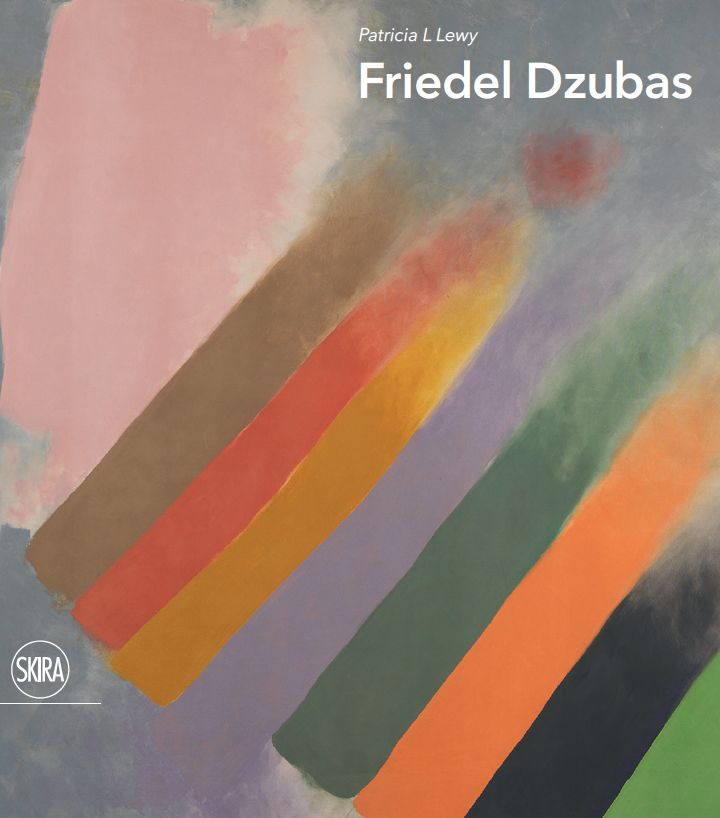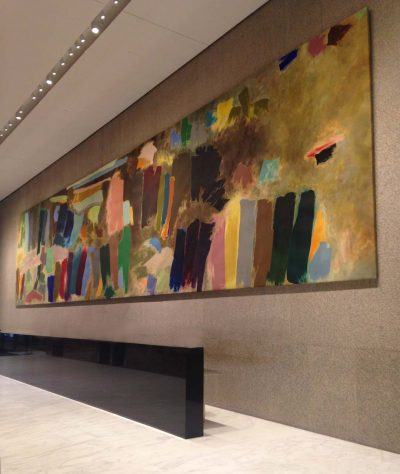 Friedel Dzubas presents the first scholarly monograph on the German-born American artist whose works display a mastery of color, light, and scale. Celebrated for his monumental, luminous color abstractions, Dzubas has nonetheless been marginalized by misclassification. Often grouped with Color Field artists of the mid-to later-twentieth century, this richly illustrated volume asserts the artist’s singular ties to historical painterly handling and pictorial structure—from the animating brush work of Titian to the light-filled, narrative frescoes by Giambattista Tiepolo. Even more, Dzubas’s abiding ambition to express pictorially his sources of spiritual inspiration in religious allegory and landscape mark his achievement as unique among his contemporaries.
Friedel Dzubas presents the first scholarly monograph on the German-born American artist whose works display a mastery of color, light, and scale. Celebrated for his monumental, luminous color abstractions, Dzubas has nonetheless been marginalized by misclassification. Often grouped with Color Field artists of the mid-to later-twentieth century, this richly illustrated volume asserts the artist’s singular ties to historical painterly handling and pictorial structure—from the animating brush work of Titian to the light-filled, narrative frescoes by Giambattista Tiepolo. Even more, Dzubas’s abiding ambition to express pictorially his sources of spiritual inspiration in religious allegory and landscape mark his achievement as unique among his contemporaries.
Friedel Dzubas: Our Collection presents for the first time an unparalleled group of forty-four paintings by Dzubas gathered by Ira A Lipman over a thirty-eight-year period—the largest collection of Dzubas works anywhere in the world. These paintings range from the early years of Dzubas’s professional successes in 1959 to the final flowering in the 1990s of a nearly five-decade career of immense productivity. Ira A Lipman has been passionate about art since his first purchase of artwork as a teenager. An astute collector of works by early European modernists, he was attracted to the abstract paintings of German-born American artist Friedel Dzubas (1915-1994) because of his expressive use of color and tactile surfaces. Dzubas, an émigré from Berlin to America at the height of Nazi hegemony, entered the art world of New York in the early 1940s at a time when paintings by Jackson Pollock and art criticism by Clement Greenberg held sway. Born between artistic generations, Dzubas at first partook of the artistic freedom and American individualism of Pollock’s and Willem de Kooning’s abstract styles, known, generally, as Abstract Expressionism. Yet soon after, he evolved into a painter who emphasized simplified forms and color as the principle means of expression, a trend in painting Greenberg titled Post Painterly Abstraction (or Color Field painting). Ultimately, Dzubas would forge an independent style, producing large-scale canvases that drew for inspiration on the vast historical and religious frescos of Giambattista Tiepolo—lyrical yet roiling surfaces that featured a masterly elegance in painterly handling and compositional design.
The publication reflects Ira A Lipman’s enduring commitment to Friedel Dzubas, among the most significant artists of modernism—a modernism that while springing from a European sensibility, is informed by the vast range of American abstraction in the mid-twentieth century. A unique opportunity to view Dzubas’s artistic evolution, this publication, Friedel Dzubas: Our Collection, also speaks to the exceptional personal commitment by Mr. Lipman to this intensely passionate artist, whose viscerally-charged color abstractions are here made available to a wider public.

